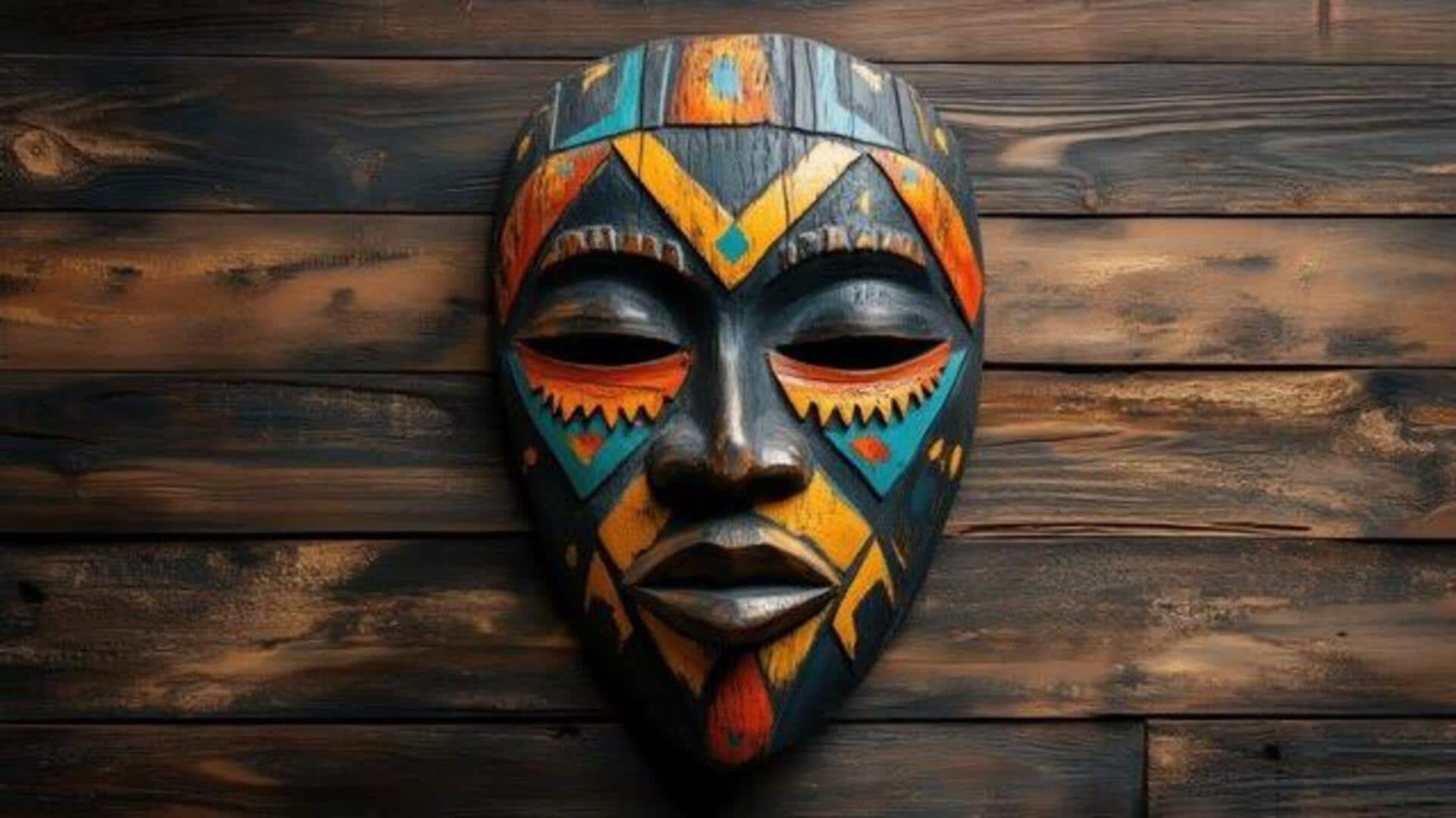
All about tribal masks
What's the story
African tribal art is famous for its colorful, symbolic representations, and masks form an integral part of it. These masks aren't merely an artistic expression but carry cultural, spiritual, and social importance. Made out of different materials including wood, cloth, and beads, they show human/animal forms with remarkable realism. The lifelike nature of these masks comes from intricate craftsmanship and detailing. Here's looking at the fascinating world of lifelike masks in African tribal art.
Craftsmanship
Materials used in mask creation
The process of making African tribal masks varies in terms of materials. They are made from wood, clay, metal, and fabric. Since wood is easily available and easy to carve, it is the most common material. Artisans frequently use natural elements like shells or feathers to beautify the mask. The material selected greatly affects the mask's texture and durability.
Cultural significance
Symbolism behind mask designs
Masks in African tribal art are deeply symbolic and often represent deities, ancestors, or spirits. Every design element carries a specific meaning associated with cultural beliefs or historical events. For example, elongated faces may symbolize wisdom or spirituality, while animal features may signify strength or protection.
Artistic methods
Techniques for achieving realism
In order to make African tribal masks lifelike, artists use sophisticated methods like intricate carving and detailed painting. They pay close attention to proportions and expressions, in a bid to create the most realistic of depictions. These depictions are made to convey emotion or character exactly the way they are meant to. This requires a thorough understanding of human and animal forms, letting artists animate mythological and cultural stories through their craft.
Ritual importance
Role of masks in ceremonies
In many African tribes, masks are integral to ceremonies, serving as bridges to communicate with the spirit world or ancestors. While dancing, mask-wearers perform characters of mythological stories deeply ingrain in their community's tradition. This not only preserves culture but also connects participants and spectators to the spirit and ancestral world in a very profound way.